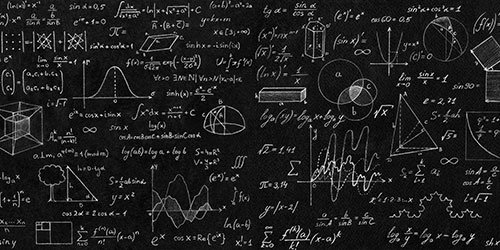What Testing is Important for Electrical Distribution Systems?
Are you responsible for maintaining the electrical distribution system at your facility?
Tired of hearing “we’ve always done it this way?”. But knowing where to look and what to focus on can be overwhelming. Fortunately, there are governing bodies that provide a framework for prioritizing what is important from a testing standpoint as it pertains to electrical distribution.
When you start evaluating the power system in your facility, you’ll need to gather several pieces of information to get started:
- A Coordination study: This study determines protective device characteristics, settings, or sizes that provide a balance between equipment protection and selective device operation that is optimum for the electrical system. It provides an analysis of all possible operating scenarios which will be or have been influenced by the proposed or completed additions or changes to the subject system.
- An Arc Flash Hazard Analysis: This analysis determines arc-flash incident energy levels and flash protection boundary distances based on the results of the Short-Circuit and Coordination Studies. One should perform the analysis under worst-case arc-flash conditions for all modes of operation. It provides an analysis of all possible operating scenarios which will be or have been influenced by the proposed or completed additions to the subject system.
- A Load Flow Study: Determine active and reactive power, voltage, current, and power factor throughout the electrical system. Provide an analysis of all possible operating scenarios.
- Stability Study: Determine the ability of the electrical system’s synchronous machines to remain in step with one another following a disturbance. Provide an analysis of disturbances for all possible operating scenarios which will be or have been influenced by the proposed or completed additions or changes to the subject system.
- Harmonic Analysis Study: Determine the impact of nonlinear loads and their associated harmonic contributions on the voltage and currents throughout the electrical system. Provide an analysis of all possible operating scenarios which will be or have been influenced by the proposed or completed additions or changes to the subject system.
These studies will provide you with a plethora of knowledge about the existing framework and identify areas of immediate attention that you, as the owner of the equipment, should act.
Let’s assume that you have the studies complete and you want to begin implementing at on your switchgear to try to extend the life or identify any deterioration. ANSI/NETA posted in their Acceptance Testing Specifications guide a general framework for inspecting and testing switchgear and switchboard assemblies. It provides step-by-step instructions on actionable items you can take to begin this journey.
Visual and Mechanical Inspection
- Compare equipment nameplate data with drawings and specifications.
- Inspect physical and mechanical condition.
- Inspect anchorage, alignment, grounding, and required area clearances.
- Verify the unit is clean and all shipping bracing, loose parts, and documentation shipped inside cubicles have been removed.
- Verify that fuse and circuit breaker sizes and types correspond to drawings and coordination study as well as to the circuit breakers address for microprocessor-communication packages.
- Verify that current and voltage transformer ratios correspond to drawings.
- Inspect bolted electrical connections for high resistance using one or more of the following methods:
- Use of a low-resistance ohmmeter in accordance with Section 7.1.2.
- Verify tightness of accessible bolted electrical connections by calibrated torque-wrench method in accordance with manufacturer’s published data or Table 100.12.
- Perform thermographic survey in accordance with Section 9.
- Confirm correct operation and sequencing of electrical and mechanical interlock systems.
- Attempt closure on locked-open devices. Attempt to open locked-closed devices.
- Make key exchange with devices operated in off-normal positions.
- Verify appropriate lubrication on moving current-carrying parts and on moving and sliding surfaces.
- Inspect insulators for evidence of physical damage or contaminated surfaces.
- Verify correct barrier and shutter installation and operation.
- Exercise all active components.
- Inspect mechanical indicating devices for correct operation.
- Verify that filters are in place and vents are clear.
- Perform visual and mechanical inspection of instrument transformers in accordance with Section 7.10.
- Inspect control power transformers.
- Inspect for physical damage, cracked insulation, broken leads, tightness of connections, defective wiring, and overall general condition.
- Verify that primary and secondary fuse or circuit breaker ratings match drawings.
- Verify correct functioning of draw out disconnecting and grounding contacts and interlocks.
Electrical Testing
After you have performed a thorough visual and Mechanical inspection and have identified all parts, now it is time to start testing those electrical components and connections.
- Perform resistance measurements through bolted electrical connections with a low-resistance ohmmeter, if applicable, in accordance with Section 7.1.1.
- Perform insulation-resistance tests on each bus section, phase-to-phase and phase-to-ground, for one minute in accordance with Table 100.1.
- Perform a dielectric withstand voltage test on each bus section, each phase-to-ground with phases not under test grounded, in accordance with manufacturer’s published data. If manufacturer has no recommendation for this test, it shall be in accordance with Table 100.2. The test voltage shall be applied for one minute.
- Perform insulation-resistance tests on control wiring with respect to ground. Applied potential shall be 500 volts dc for 300-volt rated cable and 1000 volts dc for 600-volt rated cable. Test duration shall be one minute. For units with solid-state components or control devices that can not tolerate the applied voltage, follow the manufacturer’s recommendation.
- Perform electrical tests on instrument transformers in accordance with Section 7.10.
- Perform ground-resistance tests in accordance with Section 7.13.
- Determine accuracy of all meters and calibrate watthour meters in accordance with Section 7.11. Verify multipliers.
- Control Power Transformers
- Perform insulation-resistance tests. Perform measurements from winding-to-winding and each winding-to-ground. Test voltages shall be in accordance with Table 100.1 unless otherwise specified by the manufacturer.
- Perform a turns-ratio test on all tap positions.
- Perform secondary wiring integrity test. Disconnect transformer at secondary terminals and connect secondary wiring to a rated secondary voltage source. Verify correct potential at all devices.
- Verify correct secondary voltage by energizing the primary winding with system voltage. Measure secondary voltage with the secondary wiring disconnected.
- Verify correct function of control transfer relays located in the switchgear with multiple control power sources.
- Voltage Transformers
- Perform secondary wiring integrity test. Verify correct potential at all devices.
- Verify secondary voltages by energizing the primary winding with system voltage.
- Perform current-injection tests on the entire current circuit in each section of switchgear.
- Perform current tests by secondary injection with magnitudes such that a minimum current of 1.0 ampere flows in the secondary circuit. Verify correct magnitude of current at each device in the circuit.
- Perform current tests by primary injection with magnitudes such that a minimum of 1.0 ampere flows in the secondary circuit. Verify correct magnitude of current at each device in the circuit.
- Perform system function tests in accordance with Section 8.
- Verify operation of cubicle switchgear/switchboard space heaters.
- Perform phasing checks on double-ended or dual-source switchgear to insure correct bus phasing from each source.
Why is Inspection and testing important?
Once you have a good understanding of the existing state of your electrical infrastructure you now will be able to start prioritizing items on your journey of modernization. Smart technology does not stop with automation and your power system has a ton of useful information that you can act on to increase production and reliability. Before you can start with these advances a solid understanding of current state is critical. Do your testing, understand the situation and then you make the determination on what will provide the biggest impact for success.










